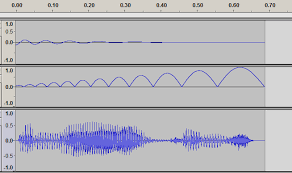Is there a Nyquist script to treat a band of pulses at the sample rate of 44100Hz as a Time Period Δt and have a predetermined tempo change ΔT in relation to that Δt, to a fraction, or multiple, of that one band of sample pulses, so that the rate of change of Tempo to be applied for an audio sample could be represented by ΔT/Δt ∝ t? Or, ΔT/Δt = rt, where r is a fraction or number. Also, Lt Δt→ 0, ΔT/Δt = dT/dt
That is, the change of tempo begins normally for the selected sample and speeds up, or slow down continually, i.e., accelerated or decelerated, to a predetermined multiple or a fraction, respectively, of the original tempo at the end. So that d²T/dt² = (d/dt)(dT/dt) has a constant numerical value. That is, d²T/dt² = r.
I apologise if I couldn’t explain myself clearly enough.
In Audacity program the Effect Tempo is a constant value. When applied to a selected audio segment, the effect causes a sound sample to become fast or slow in tempo (beat of music) by a constant numerical value for the entire selected segment, from the original tempo.
But what I need is a varying tempo, accelerating up or decelerating down.
Later on, we could progress to geometric or exponential speeding up or slowing down. Presently, I would be satisfied with a constant acceleration (i.e., d²T/dt² linear, parallel to abscissa axis graphically, dT/dt, a straight line with a specific slope).
My leaders and seniors, please pardon for the apparent ambiguity. The fault is all mine.
